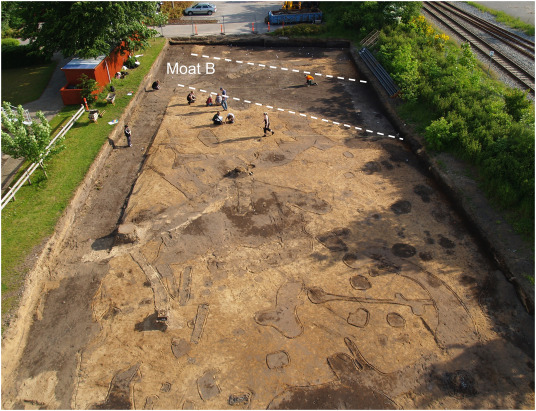Dating earthwork fortifications: Integrating five dating methods in Viking-age Ribe, Denmark
New publication by Assistant professor Sarah Croix, PhD student Olav Elias Gundersen, Associate professor Søren M. Kristiansen, Associate professor Jesper Olsen, Professor MSO Søren M. Sindbæk and Morten Søvsø (Museum of Southwest Jutland).

Croix, S., Gundersen, O. E., Kristiansen, S. M., Olsen, J., Sindbæk, S. M. & Søvsø, M. (2019). "Dating earthwork fortifications: Integrating five dating methods in Viking-age Ribe, Denmark", Journal of Archaeological Science: Reports 26.
Abtract
Precise dating of earthworks with limited datable material is a well-known archaeological challenge. Here, based on artefact chronology, coin dates, radiocarbon dating of macroscopic and soil organic-matter fractions, and Bayesian modelling combining all these, we discuss the relative strengths and limitations of each method for dating an earthwork fortification from the Viking-age town of Ribe, Denmark. In a novel approach, we model the circulation time and loss rates of coin finds to obtain a detailed distribution curve, which is worked directly into a Bayesian model. It is shown that the earthworks, an early moat and rampart, belong neither to the ninth-century emporium or to the eleventh-century rise of the Cathedral town. The refined dates point to a construction in the period 889–974 CE and a use-life of at least 50 years, but the moat was filled-in by the mid 11th century CE. In consequence, Ribe's earliest fortification can be compared to the early fortification of two other Viking-age towns: Hedeby and Aarhus, possibly as a concerted defensive effort. Our integration of five dating methods reveals the strengths and weaknesses of each and provides a means to compare and correlate each component within a characteristically heterogeneous set of archaeological dates.
